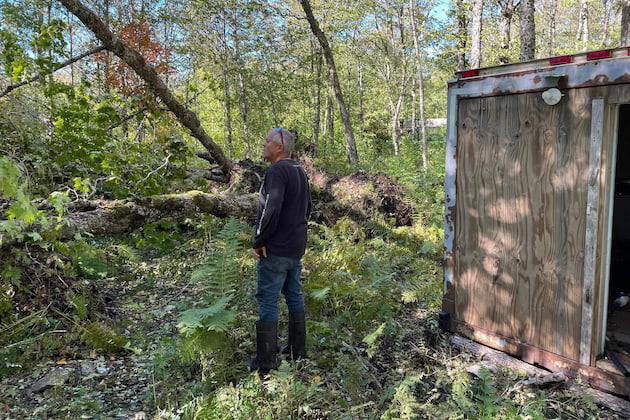Headlines
Hurricane wipes out maple in Nova Scotia
Sugarmakers lose thousands of trees, toppled by winds
By PAUL POST | NOVEMBER 8, 2022
ANTIGONISH, N.S.—Jason Haverkort has weathered quite a few storms during his years as a veteran Nova Scotia sugarmaker.
Nothing compares to the devastating fury wrought by Hurricane Fiona that slammed eastern Canada, leaving behind a nearly $1.5 billion path of destruction in its wake.
The tempest, packing more than 110 mph winds, hit during the late-night hours of Friday, September 23. Those who could sleep, awoke to unimaginable damage the next day.
“Never in my wildest dreams could I imagine such devastation,” said Haverkort, owner of Haveracres Maple Farm in northeast Nova Scotia.
“I have areas of complete write off, only a few twigs left standing. Most areas suffered a 50 percent or greater loss of tappable trees. We’re estimating 6,000 of our 12,000 trees to be blown down. The wind seemed to funnel up the valleys and flattened trees in its path. Some of the trees left standing are in rough shape also, many with broken branches.”
His sugarhouse somehow escaped unscathed, but trees came down all over his pipeline system, which has to be cut and spliced in many places. “I have been on a pipeline replacement schedule for a few years, but now it should all be replaced ,” he said.
Haverkort plans to tap whatever healthy trees are left, but expects more than a 50 percent loss of income from Fiona. “I couldn’t survive a year with no income,” he said.
But for some maple operations, there is no future.
“There are producers who will not be able to recover with 50 to 75 percent of trees lost and in some cases, on slopes that faced the wind, 100 percent,” said Kevin McCor- mick, a Cumberland County sug- armaker and one of the region’s largest equipment dealers for Lapierre.
“The maple industry here in Nova Scotia has been changed for our lifetimes. In some cases, after generations of maple in the fam- ily’s bloodlines, they will have to dig very deep to get past this tremen- dous loss.”
It took workers two weeks just to open all the roads and trails at McCormick’s 35,000-tap operation.
“It’s been a challenging, difficult and dangerous situation with trees uprooted and broken off,” he said. “A very high percentage of the lost trees are uprooted. We have many weeks of work ahead to get the cutting done.
Then the tubing system repairs will be assessed. We will haul out as much wood as pos- sible as long as time and weather conditions permit, selling firewood and saw logs.”
































